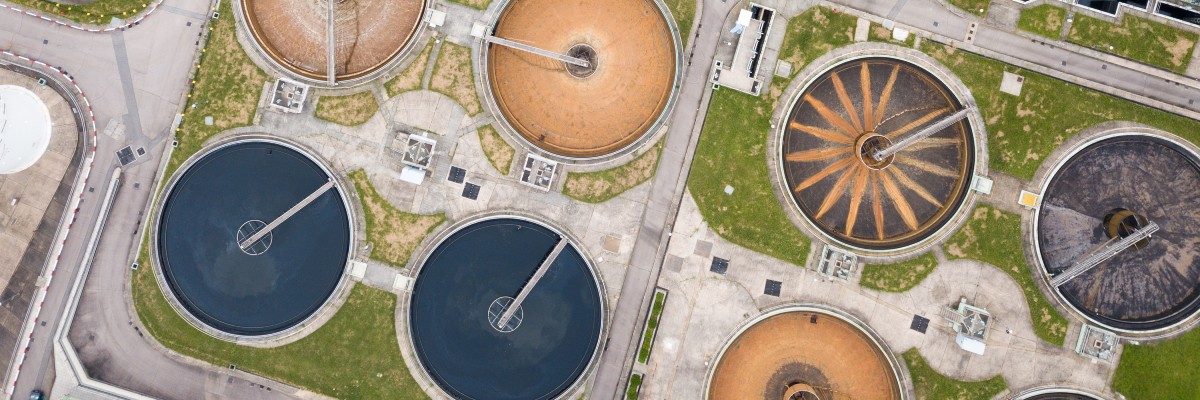Blog
Bioaugmentation in Wastewater Treatment: Everything You Need to Know [GUIDE]
The bioaugmentation process is essential to helping wastewater treatment facilities save money and produce better results. In this short guide, we review what bioaugmentation is, why it’s important and how it works.
What is Bioaugmentation?
Bioaugmentation is the addition of any beneficial microbe (either singly or more commonly in groups) to enhance a biological process and achieve desirable effects–lower costs, improved performance, increased safety, and reduced odors.
Added microbes augment (increase) the existing biomass, making it more stable and increasing its ability to produce an acceptable effluent (also known as wastewater).
How Bioaugmentation Benefits Wastewater Treatment
Bioaugmentation benefits wastewater treatment plants and facilities in several ways. This includes:
- Reducing effluent peaks (which prevents NPDES non-compliance).
- Reducing effects of toxic compounds.
- Improving settling through filamentous control.
- Enhancing process stability.
- Reducing sludge production.
- Reducing maintenance.
- Reducing the risk of fines.
So, how does a treatment plant know they need bioaugmentation in the first place?
When Is Bioaugmentation Necessary?
Wastewater systems are dependent on a living biomass functioning under semi-controlled conditions. When the environment or chemistry within the treatment facility changes, so does the species composition of the biomass.
The problem is that the change isn’t the same every time because the bacterial composition within the plant is constantly evolving by the hour and the day, making it difficult to determine the actual problem. This leads to a few common symptoms.
Signs a Wastewater Treatment Plant Needs Bioaugmentation
- Poor settling sludge
- No ammonia oxidation
- Lots of foaming
- Erratic biochemical oxygen demand (BOD) removal rates
- Not meeting effluent permit requirements
- Odors (H2S)
Many facilities try to treat these symptoms by adding equipment or chemical products like oxidizing agents, polyelectrolytes and more. But these physical means are more expensive and less effective than bioaugmentation.
And more importantly, they don’t fix the underlying problem.
To do that, you’ll need to partner with a trusted expert in wastewater treatment troubleshooting methods (including bioaugmentation) and monitoring. Here’s what that looks like.
How the Bioaugmentation Process Works
Unlike other solutions, bioaugmentation experts focus on getting to the root of your actual problem. So instead of just treating the symptom or surface-level issues, they identify the true issue and offer a proven solution.
Here’s how they do it:
- Evaluate the situation
- Take and review samples
- Provide a diagnosis and recommend solutions
1. Evaluate the Situation
A bioaugmentation expert will come to your plant or facility to evaluate the situation. Sometimes the problem can seem obvious at first, like with foaming or odors. But those could just be symptoms, not the real issue.
When you go to a doctor, they evaluate your symptoms, conduct tests, and look for useful clues to the root of your issue.
Similarly, the bioaugmentation expert will take and review samples to find out why your facility is having problems.
2. Take and Review Samples
While the bioaugmentation expert is visiting your site, they will take wastewater samples to bring back to the laboratory for further review.
Once the samples are placed under the microscope, the scientists will conduct microscopic exams and look at a variety of organisms in the biomass, including ciliates, rotifers, amoebas and more.
These insights give the scientists a better understanding of the problem so they can offer a proper solution. They determine which strains have been outcompeted or have died off so that they can be bioaugmented to establish a more stable or robust bacterial community.
3. Provide a Diagnosis and Recommend Solutions
When the laboratory testing is complete, the bioaugmentation expert will provide a diagnosis of the situation. From there, they recommend solutions to resolve the problem, which can include products, equipment and analytical systems like:
- COD testing products
- Electrolytic respirometers
- Wastewater testing kits
- BTX biotreaters
- Dry product feeders
- Liquid product feeders
You can then implement the solution at your treatment plant, solving the problem.
Conclusion
Wastewater problems are complex, and it’s important to know you’re not on your own. If you don’t have the tools or resources to tackle the issue, find a bioaugmentation partner who does. Get to the root of the issue with a bioaugmentation process that achieves desired results.
Monera Technologies offers high-end consulting, comprehensive lab services and cost-effective bioaugmentation solutions for wastewater treatment facilities. Contact us to learn how we can bring a holistic approach to your facility’s problems.
